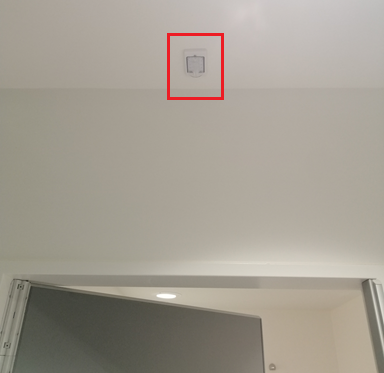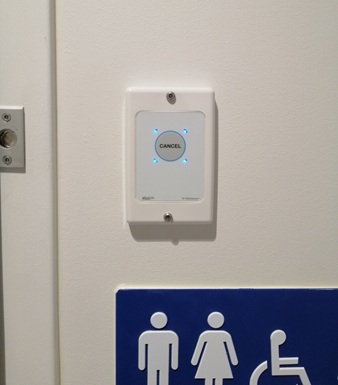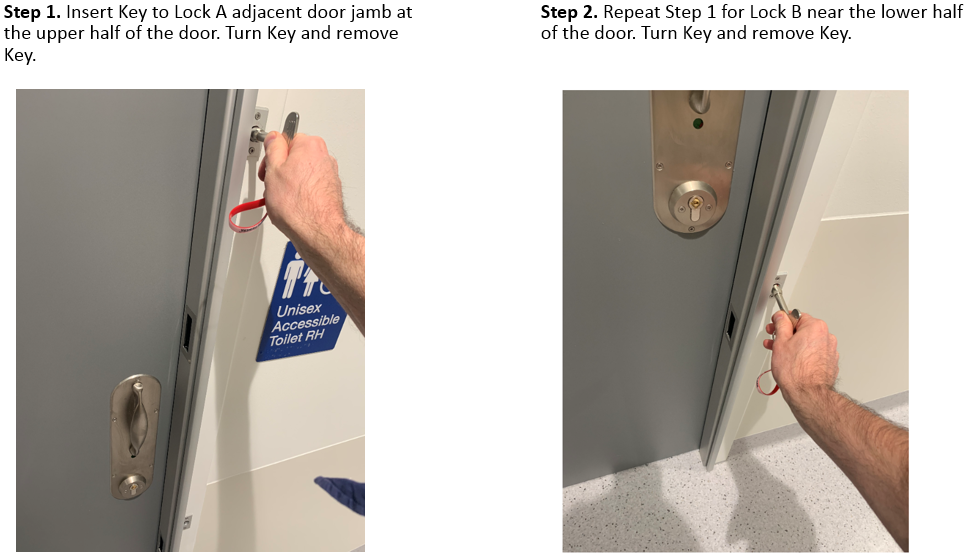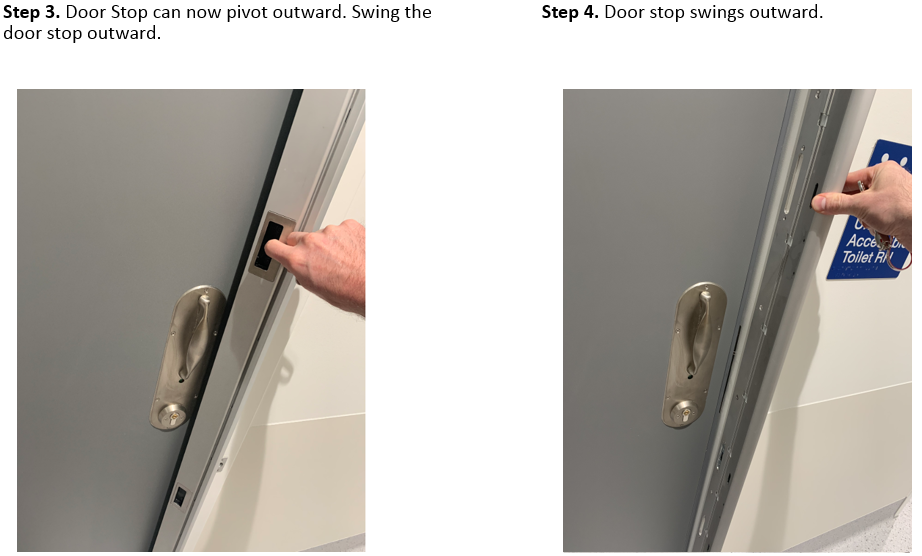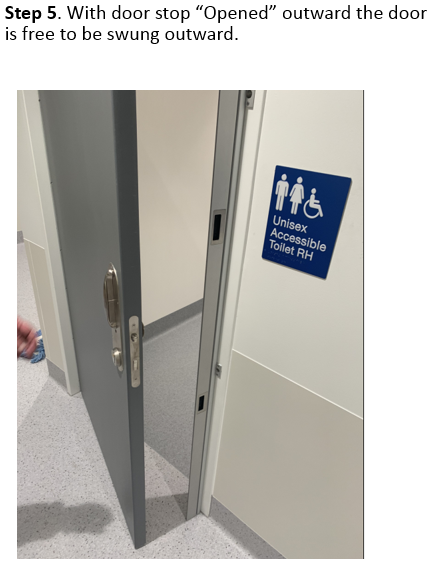This document provides a summary of best practice in relation to the operation of bathroom occupancy sensors obstructed access doors in BAU and The Hub. The summary has been created to support staff during the Sunshine Hospital Emergency Department Redevelopment transition and early post-move period, and has been endorsed by the SHED Leadership Team.
Overview
The aim of this QRG is to outline the process for operation of bathroom occupancy sensors and obstructed access doors located in BAU and The Hub.
Applicability
This QRG applies to all staff working in BAU and The Hub.
Responsibility
It is the responsibility of the Nurse Unit Managers, Directors and Deputy Directors of the Emergency Department, and the Emergency Department line Managers to ensure the relevant SHED staff are familiar with this QRG, that it is implemented according to the guidelines as outlined within, and that there is compliance by all staff members.
Guideline/Process Details
Each of the bathrooms (sometimes referred to as ensuites) located in BAU and The Hub are equipped with the following safety features:
- Occupancy sensors to alert staff to extended bathroom use (without detected motion) by a patient, which may indicate a safety concern.
- Obstructed access doors which allow staff to enter bathrooms if this becomes necessary due to a safety concern.
Occupancy Sensors detect movement within locked bathrooms in BAU and The Hub, and trigger an alarm if no movement is detected after a set period of time. The system operates as follows:
- Patient enters the bathroom and locks the door from the inside – this activates the occupancy sensors.
- If the occupancy sensors detect no movement for a continuous period of 7 minutes, an alarm is triggered.
- When the alarm is triggered, the occupancy sensor alarm light (located above the bathroom door; image in Appendix 1) will commence flashing. An alarm is also displayed on the annunciator panel in the immediate clinical area (BAU or The Hub).
- Please note the alarm will not re-trigger at time intervals; only once at 7 minutes of no detected movement.
- If investigating staff are satisfied that there is no safety risk, staff can cancel the alarm by pressing the cancel button beside the bathroom door (image in Appendix 2).
- Please note the timer will not reset after the alarm is cancelled. The door needs to be unlocked and relocked (reseting the system), to start the timer again. This is a limitation of the system.
- Please note that pressing the cancel button before an alarm is triggered will have no affect (the alarm will still go off once at 7 minutes of no detected movement).
- If investigating staff are concerned there is a safety risk, they can utilise the Star Key to override the bathroom lock and enter, or use the Obstructed Access Key Device (see details below) in the event the door is obstructed (e.g. by non-responsive patient).
Please see the Key Management QRG for information on the storage and access of keys and key devices in SHED.
Obstructed Access Doors have facility to allow outward swinging of the bathroom door should the door be obstructed from within the room, denying (normal) inward opening.
Staff working in BAU and The Hub will have access to a special Obstructed Access Key Device (image in Appendix 3) which permits authorised staff to release the full height door stop and allow the door to open outwards (operation steps with images in Appendix 4).
Please see the Key Management QRG for information on the storage and access of keys and key devices.

